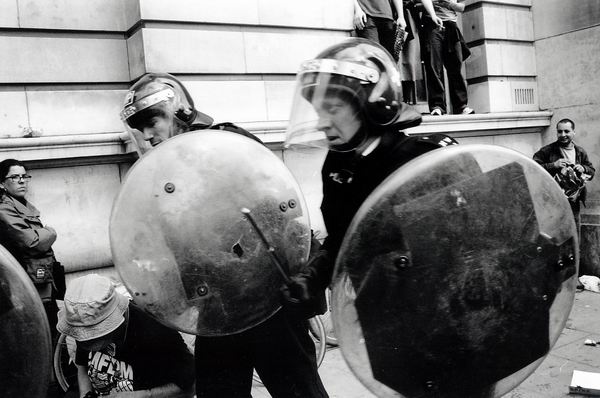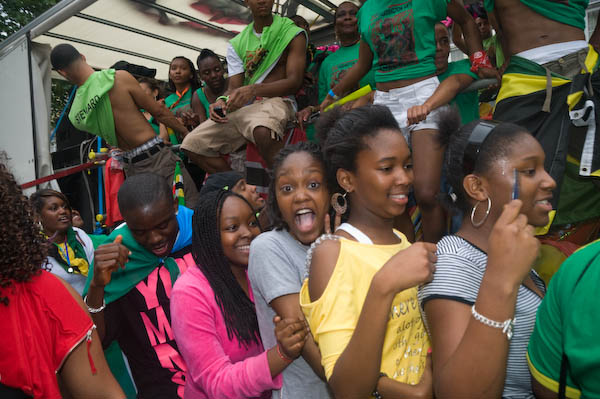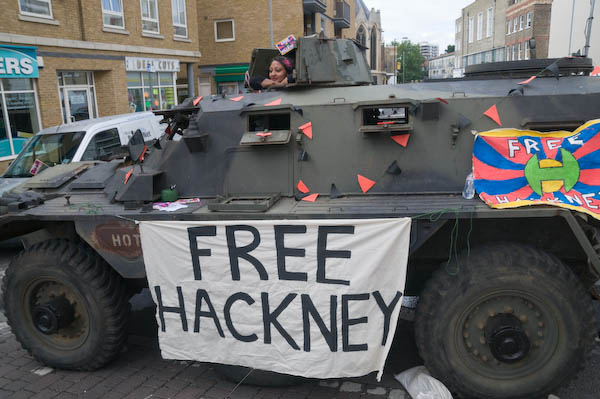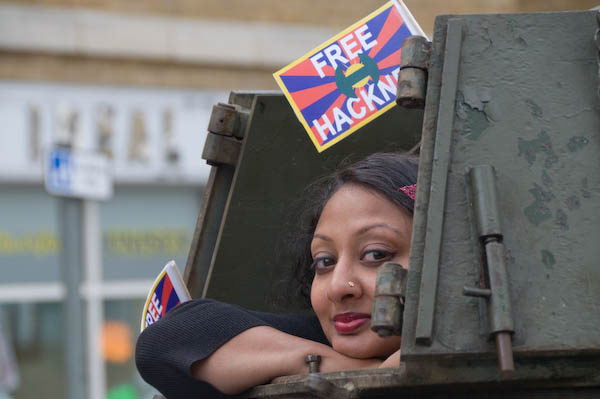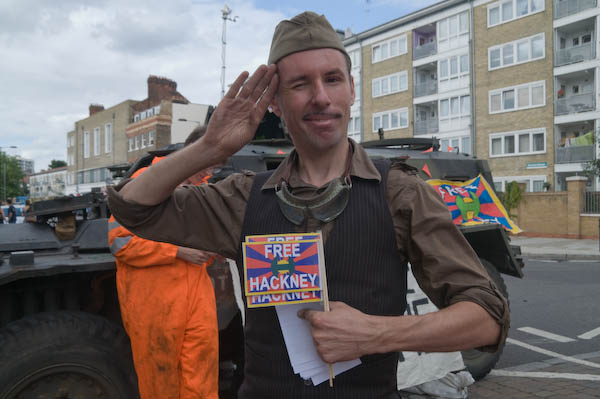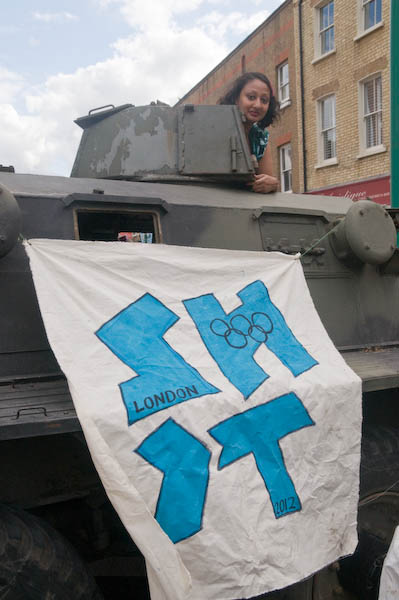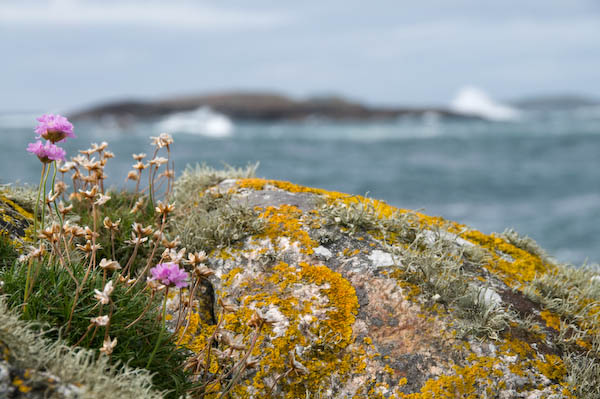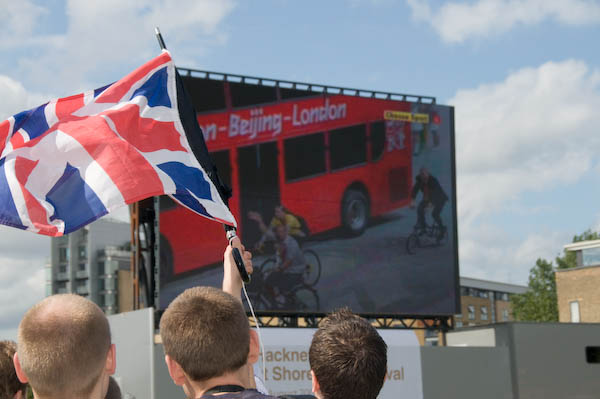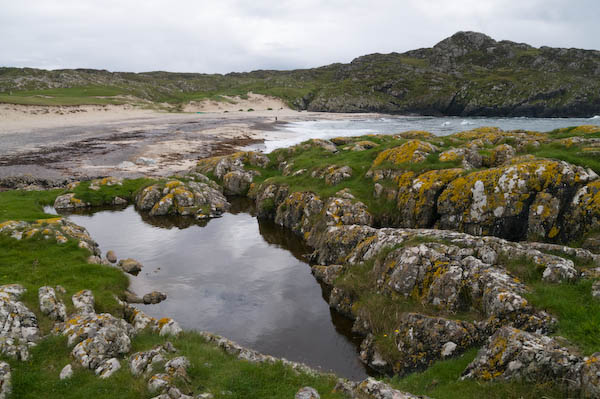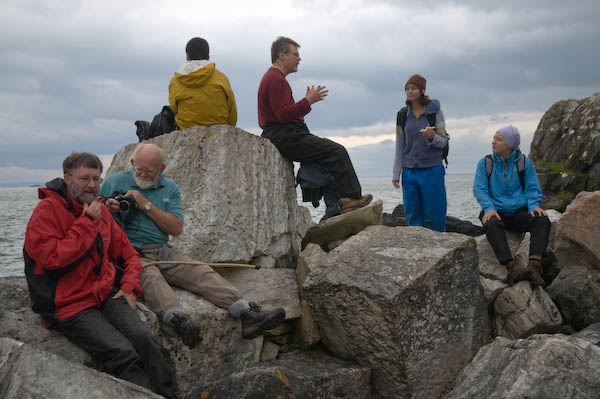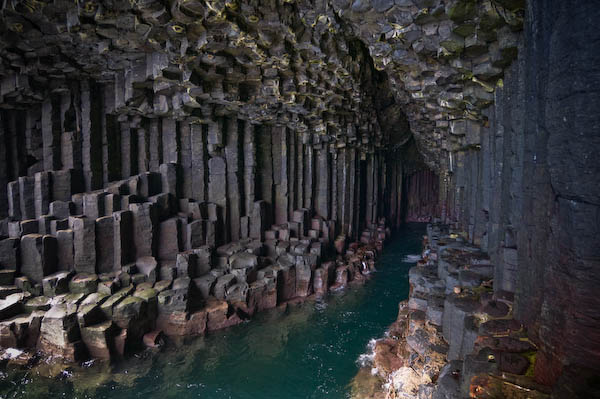‘Where We Live – Queens, New York 2003-4,
Howard Greenberg Gallery, New York, 27 June-22 Aug 2008
As someone as long in the tooth as Mr Gohlke, and involved just as long as he in communication through seeing, I feel I have both the right and the obligation to speak of this show, and what I feel are its merits and failings. And as I sense its overall merits are few, and its failings great, Ill deal with the former first.
The 40 plus prints exhibited (mostly horizontal) are large and very large by the standards of a documentary photographer of his age and type, and far too big for the smallness of their content. So why he would want to draw our attention to this view of Queens is beyond my comprehension, especially after the gallery handout stated: “Queens is both a destination and a way station, where ethnic diversity first undergoes the turbulent process of Americanization.”.
Well, looking at this show, I would have to challenge that remark, for there is no sign of habitation, let alone a piling up of people awaiting assimilation, neither is there anything chaotic, untidy, or frenzied about these images that would suggest this process, singularly or en masse. Indeed for Mr Gohlke to gain a chance to capture anything of it, he would have had to take the risk of working in a less affluent, more borderline neighbourhood. That way, he could easily show us these same nice tidy homes adjacent to or juxtaposed against failing light-industry, foreign greengrocers, new Irish pubs, Indian news agents, graffiti, abandoned cars, and possibly even sneakers dangling from tied shoelaces hanging from a spaghetti of overhead cables. And all manner of other signs of change and cultural clash, that are easily and abundantly available, if one chooses the right locality, and focuses an appropriate mindset to illustrate transition.
These images are more like advertisements than anything to do with social commentary or the art of thoughtful seeing, and that having been said, I believe they would be better placed in an Estate Agents window than on a gallery wall.
So Im thinking whoever wrote the PR for this show was doing it without access to the images, while Mr Gohlke was out doing some simple stock-taking with his camera in a part of Queens that looks more like the place where we would find “Stepford Wives” residing than any area in the process of great social and ethnic turmoil. The only kind of reading these observations project is the neutrality and economy of a quantity surveyors list. A list of different types and kinds of required bricks, railings, fences, doors, sidings, windows, awnings, bushes, trees, shrubs, and flower beds. All that seems to be missing here is the costings of all these different home and garden accessories, so if they celebrate anything at all, it seems to be “Home Depot“, or some such other like place.
As someone who is a veteran walker of this city, I know where to look for what “Where We Live” promised but didnt deliver, because Ive explored a number of such confused and contrasting areas of this borough and the other four. So I know from experience all that just mentioned is indicative of this kind of turbulence, and is very gettable, as long as one commits the necessary thought, time and effort.
But I suspect he’s a contented one-way approach person, and will carry on snapping stylistically as he always has, leaving any sign of personal reading in or across his imagery to others, as well as any accompanying text. And that will always get him into deep shit with people who can read image/text and text/image, for his promises remain undelivered.
However, on the plus side, as this kind of graphic wall furniture goes, they are beautifully finished and presented, as is the standard of Howards gallery. But Mr Gohlkes commitment here is merely to shape-up on this dull neighbourhood, that at best reveals an abundance of poor taste, made taut through simple juxtaposition. And to think it took him two years to bring into being this small graphic exercise. Even more astonishing to me is that it should get an outing off campus, let alone at a major New York Gallery.
But to be kind, and to also to encourage the photographer to go back and give the subject suggested in the text another try, I did happen to notice here and there a few barred windows and the occasional front door that resembled a small town bank vault. So maybe his mind was beginning to kick in with a little, but too late. From his CV, he seems like a guy who knows how to get access to funding, so if he doesnt feel “hes already done it“ and there is a next time, this could be a start point. He might consider trying to let us know something about those who live there, as I listed earlier. Such as what the inhabitants drive, where they eat and shop, anything that would help to warm up Mr Gohlkes precision and economy, so we are motivated to look again.
At this juncture he simply gives us access to what we can easily see for ourselves if we venture past those houses, and down those streets. So I must pose the question “Does this view of Queens really deserves great praise?“ Yes indeed it does, but only if we were tragically all born blind, and these observations were printed in Braille, then we could all feel our way around the gallery walls, and be amazed.
© John Benton-Harris – 14 August 2008
Web Links
Howard Greenberg Gallery
Frank Gohlke

